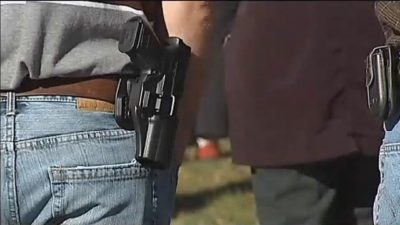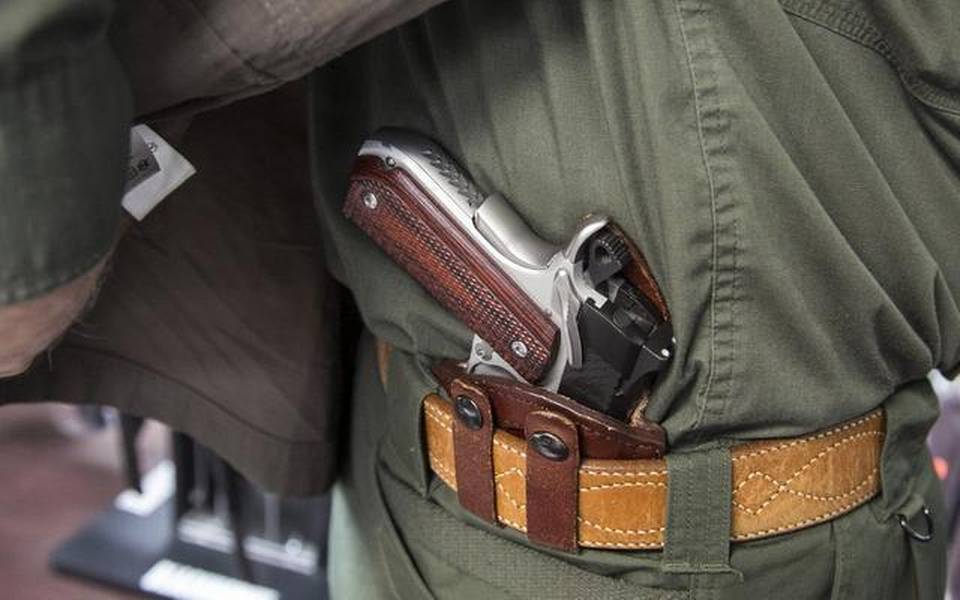As a concealed firearms instructor I see students come through my classes from all walks of life, and they all seem to make the same basic mistakes when it comes to carrying a concealed weapon.
Here are the top five mistakes I see concealed carriers make:
1. Using cheap holsters
A lot of people will slap down $500 or more for a gun, but then feel queasy about spending $50 on a holster. That $14.95 holster made in China is nice and cheap, but, man, it’s probably not comfortable. It’s likely made from cheap nylon that sags and offers terrible retention – and will slow and disrupt your draw. Very few universal holsters actually work, and I’ve never seen a nylon model that does work.
How To Hide Your Guns, And Other Off-Grid Caches…
Holsters should be fitted – or at least close to being fitted. A good holster isn’t even that expensive when it comes to factoring in comfort, retention, and the ability to draw. There is a good deal on Alien Gear that allows shooters to get two quality holsters for $50 or one for $35. There is no excuse to cling to the cheapest thing you can find. Some cheap holsters even can be unsafe. A shoulder holster that lets the weapon rotate and spin can be quite unsafe when the weapon is pointing at your body.
2. Never training/practicing
Concealed carriers should seek some form of training. Even if it’s not formal classroom training, carriers should at least take up instruction via the Internet or DVD; something is better than nothing. But simply watching these videos, or reading these articles means nothing if you aren’t out there actually practicing these concepts.
 Practice should involve some live fire, but a lot of it can be done dry. Dry firing is an excellent and free method of practicing trigger control, a proper grip and follow-through. You can also train drawing from concealment, drawing in different positions, and, of course, draw and dry fire. Reloads and failure drills can be done with Snap Cap dummy rounds. You take the skills you practice dry and take them to the range to confirm them, and get that live fire practice in.
Practice should involve some live fire, but a lot of it can be done dry. Dry firing is an excellent and free method of practicing trigger control, a proper grip and follow-through. You can also train drawing from concealment, drawing in different positions, and, of course, draw and dry fire. Reloads and failure drills can be done with Snap Cap dummy rounds. You take the skills you practice dry and take them to the range to confirm them, and get that live fire practice in.
3. Playing with the gun
A lot of new concealed carriers constantly play with and fiddle with their weapon and holster. They also tend to tuck their shirt over their weapon, and constantly pull on the shirt to make sure the weapon is covered. You can spot a new concealed carrier a mile away by how much attention they put to a small portion of their hip. It’s not only their hip; trust me, you can see someone with a shoulder holster, too.
My Personal Defender: Low Cost Way To Defend Yourself Against Lowlife Criminal Scum!
Basically, if you are having to constantly adjust your holster due to comfort or retention issues, then maybe that holster doesn’t work for you, and maybe you should consider a different one. Don’t be afraid that someone will see it printing, or see a small flash of it when you climb out of your car. Most people pay very little attention to anything, especially what’s on your hip.
4. Getting stuck on one caliber
This is a major consideration when you are choosing a firearm. People often get stuck on one caliber versus another, and this often leads to some serious issues in weapon selection. For example, the 357 Magnum people who get stuck on that round may purchase a small, J frame in 357 Magnum and find that a 357 is a bit much for a pocket gun. Instead, focus on a caliber that can penetrate 12 inches of ballistic gel reliably, and one you can shoot well. For me that is 9mm; I can afford to shoot a lot in practice, and the round is sufficient for self-defense. Shot penetration and shot placement are the two most important features for a defensive handgun.
5. Taking advice, and not gaining experience
Everything heard or read regarding firearms should be taken with a grain of salt, even if you agree with everything else someone is saying. Unless you have personal experience with the subject, do not take it as the “gospel.” If you read or hear something you agree with, go out there and actually try it out; it might work for 99 out of a 100 people, and you could be that one. For example, appendix carry has become the most popular gun carrying method to hit the Internet in the last few years, and it works for a lot of people. A lot of reputable trainers use and appreciate it, but, personally, I found it painful and uncomfortable.
My main takeaway: Never trust anything until you try it.
What mistakes would you add to this list? Share your thoughts in the section below:
There’s A Trick To Navigating Federal And State Gun Regulations. Read More Here.
 Off The Grid News Better Ideas For Off The Grid Living
Off The Grid News Better Ideas For Off The Grid Living





